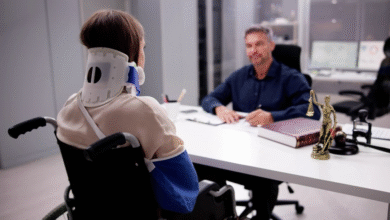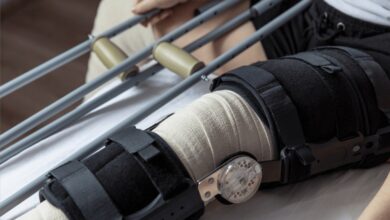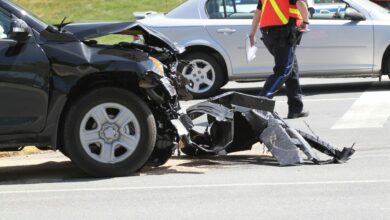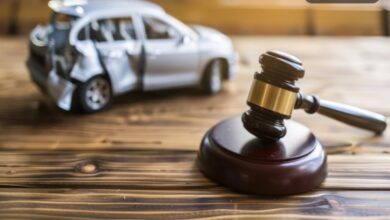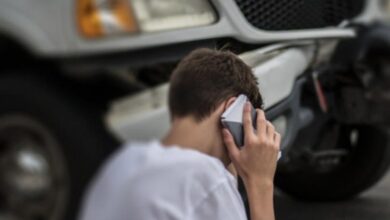Pedestrian Accident Laws in Arkansas Explained
This comprehensive guide will explore Pedestrian Accident Laws in Arkansas, covering key statutes, fault determination, and compensation options.

Pedestrian accidents are a serious concern in Arkansas, where urban and rural roads alike pose risks to those traveling on foot. With an estimated 25 pedestrian fatalities annually in the state, understanding Pedestrian Accident Laws is crucial for both pedestrians and drivers. These laws govern how accidents are handled, who is liable, and what steps victims can take to seek compensation. This comprehensive guide will explore Pedestrian Accident Laws in Arkansas, covering key statutes, fault determination, compensation options, and practical steps for victims. By delving into the legal framework, we aim to empower residents and visitors with the knowledge needed to navigate these unfortunate incidents.
Understanding Pedestrian Accident Laws in Arkansas
Pedestrian Accident Laws in Arkansas are designed to protect both pedestrians and motorists by establishing clear rules for road safety and liability. These laws outline the responsibilities of pedestrians and drivers, ensuring that everyone adheres to traffic regulations to minimize accidents. According to the Governor’s Highway Safety Association, Arkansas saw a 17% increase in pedestrian fatalities between 2019 and 2020, highlighting the importance of understanding these regulations.
Key Arkansas Statutes Governing Pedestrian Accidents
Several sections of the Arkansas Code directly address Pedestrian Accident Laws, providing a legal framework for handling collisions between vehicles and pedestrians. Below are the primary statutes relevant to pedestrian accidents:
- Arkansas Code § 23-89-202: This statute mandates that every automobile liability insurance policy must cover pedestrians struck by an insured vehicle. Injured pedestrians are entitled to medical benefits up to $5,000, income disability benefits for up to 52 weeks at a maximum of $140 per week, and accidental death benefits. While this provides some immediate relief, these benefits are often insufficient for severe injuries, requiring victims to pursue further compensation through insurance claims or lawsuits.
- Arkansas Code § 27-52-1201: This law requires pedestrians to obey traffic signals and road signs at intersections, such as waiting for a green light or walk signal. If no traffic signal is present, vehicles must yield to pedestrians in marked crosswalks. However, pedestrians crossing outside a crosswalk must yield to vehicles, emphasizing shared responsibility on the road.
- Arkansas Code § 27-51-1201: This statute specifies that pedestrians crossing a roadway outside a marked or unmarked crosswalk at an intersection must yield the right-of-way to vehicles. This rule underscores the importance of using designated crosswalks to ensure safety and legal protection.
- Arkansas Code § 27-53-202: Drivers involved in accidents resulting in injury, death, or property damage exceeding $3,000 must immediately notify law enforcement and remain at the scene until they fulfill reporting requirements. This ensures that accidents are properly documented, which is critical for legal and insurance purposes.
These statutes form the backbone of Pedestrian Accident Laws in Arkansas, balancing the rights and responsibilities of pedestrians and drivers. Understanding these laws helps clarify who may be held liable in an accident and what steps to take afterward.
Determining Fault in Pedestrian Accidents
One of the most critical aspects of Pedestrian Accident Laws is determining fault, as this directly impacts compensation. Arkansas operates under a modified comparative fault system, which means that fault can be shared between parties, and compensation is adjusted accordingly. If a pedestrian is less than 50% at fault, they can recover damages, but their award is reduced by their percentage of fault. If they are 50% or more at fault, they cannot recover compensation.
Common Scenarios in Pedestrian Accidents
Pedestrian accidents often occur due to negligence by either the driver, the pedestrian, or both. Here are some common scenarios and how fault is typically assessed:
- Driver Negligence: Drivers are often at fault if they fail to yield to pedestrians in crosswalks, speed, drive while distracted (e.g., texting), or operate a vehicle under the influence. For example, if a driver runs a red light and strikes a pedestrian in a marked crosswalk, they are likely to be held liable under Pedestrian Accident Laws.
- Pedestrian Negligence: Pedestrians may be at fault if they cross outside a designated crosswalk, ignore traffic signals, or dart into traffic unexpectedly. For instance, if a pedestrian crosses in the middle of a block without checking for oncoming traffic, they may share fault, reducing their compensation.
- Shared Fault: In many cases, both parties contribute to the accident. For example, a pedestrian might step into a crosswalk without looking, while a driver is distracted by their phone. If the pedestrian is found 20% at fault, their compensation would be reduced by 20%.
To establish fault, evidence such as police reports, witness statements, surveillance footage, and accident scene photos is crucial. An experienced attorney can help collect and present this evidence to build a strong case under Pedestrian Accident Laws.
Compensation Available Under Pedestrian Accident Laws
Victims of pedestrian accidents in Arkansas can seek various types of compensation, depending on the severity of their injuries and the circumstances of the accident. Pedestrian Accident Laws allow for the following types of damages:
Economic Damages
- Medical Expenses: These include costs for hospital visits, surgeries, rehabilitation, medications, and ongoing care. Severe injuries, such as traumatic brain injuries or spinal damage, can result in medical bills reaching into the millions.
- Lost Wages: If injuries prevent a victim from working, they can seek compensation for lost income, including future earnings if the injury results in long-term disability.
- Property Damage: Compensation may cover damage to personal items, such as clothing or electronic devices, damaged in the accident.
Non-Economic Damages
- Pain and Suffering: This compensates for physical pain, emotional distress, and reduced quality of life. Non-economic damages are subjective but can be significant in cases of severe or permanent injuries.
- Loss of Companionship: In fatal pedestrian accidents, surviving family members may seek compensation for the loss of companionship or guidance.
Punitive Damages
In cases where a driver’s actions are deemed egregious—such as driving under the influence or intentionally causing harm—courts may award punitive damages to punish the defendant and deter similar behavior. These are less common but possible under Pedestrian Accident Laws when negligence is extreme.
Limitations on Compensation
Under Pedestrian Accident Laws, the statute of limitations for filing a personal injury lawsuit in Arkansas is three years from the date of the accident (Arkansas Code § 16-56-105). Missing this deadline typically results in the case being dismissed, so prompt action is essential. Additionally, the modified comparative fault rule means that compensation is reduced or denied if the pedestrian’s fault exceeds 50%.
Steps to Take After a Pedestrian Accident in Arkansas
Navigating Pedestrian Accident Laws requires immediate action to protect your rights and build a strong case. Here are the essential steps to take after a pedestrian accident:
1. Seek Medical Attention
Your health is the top priority. Even if injuries seem minor, seek medical evaluation immediately, as some injuries, like concussions, may not be immediately apparent. Medical records also serve as critical evidence in your case.
2. Report the Accident
Arkansas law requires drivers to report accidents involving injury, death, or property damage over $3,000 to law enforcement immediately. As a pedestrian, ensure a police report is filed, as it documents the incident and helps establish fault.
3. Gather Evidence
Collect as much evidence as possible, including:
- Photos of the accident scene, injuries, and vehicle damage
- Contact information from witnesses
- The driver’s name, license plate, insurance details, and contact information
- Any available surveillance footage
This evidence strengthens your claim under Pedestrian Accident Laws.
4. Contact Your Insurance Company
Report the accident to your insurance provider, but avoid admitting fault or providing a detailed statement until you consult an attorney. Arkansas is an at-fault state, meaning the at-fault party’s insurance typically covers damages, but your policy may include personal injury protection (PIP) for additional coverage.
5. Consult a Pedestrian Accident Lawyer
An experienced attorney is invaluable in navigating Pedestrian Accident Laws. They can:
- Interpret complex statutes and case law
- Gather and preserve evidence
- Negotiate with insurance companies
- Represent you in court if necessary
Many Arkansas law firms, such as Rainwater, Holt & Sexton or Morris Bart, LLC, offer free consultations and work on a contingency fee basis, meaning you pay nothing unless they win your case.
6. File a Claim or Lawsuit
Depending on the circumstances, you may file an insurance claim or a personal injury lawsuit. An attorney can help determine the best course of action to maximize compensation under Pedestrian Accident Laws.
Common Causes of Pedestrian Accidents in Arkansas
Understanding the causes of pedestrian accidents can help prevent them and inform legal strategies. According to 2023 data, common causes in Arkansas include:
- Distracted Driving: Texting, talking on the phone, or other distractions are leading causes of accidents. Arkansas law prohibits texting while driving, with fines up to $250 for a first offense.
- Speeding: Excessive speed reduces a driver’s ability to stop for pedestrians and increases injury severity. Speeding-related crashes accounted for over a quarter of fatal accidents in Arkansas in 2022.
- Drunk Driving: Driving under the influence remains a significant issue, with a blood alcohol content (BAC) limit of 0.08 for drivers over 21.
- Failure to Yield: Drivers failing to yield to pedestrians in crosswalks violate Pedestrian Accident Laws and are often liable for resulting injuries.
- Pedestrian Errors: Crossing outside crosswalks, ignoring traffic signals, or stepping into traffic unexpectedly can contribute to accidents.
Little Rock is particularly dangerous, with 115 pedestrian accidents reported in 2020, underscoring the need for awareness in urban areas.
Pedestrian Responsibilities Under Arkansas Law
While drivers bear significant responsibility, Pedestrian Accident Laws also place obligations on pedestrians to ensure safety:
- Obey Traffic Signals: Pedestrians must follow walk/don’t walk signals and traffic lights at intersections.
- Use Crosswalks: Crossing in marked or unmarked crosswalks at intersections gives pedestrians the right-of-way. Crossing mid-block requires yielding to vehicles.
- Stay Vigilant: Pedestrians should avoid distractions like phones and always check for traffic, even when they have the right-of-way.
Failure to follow these rules can result in shared fault, reducing compensation under Pedestrian Accident Laws.
Driver Responsibilities Under Pedestrian Accident Laws
Drivers have a heightened duty of care under Pedestrian Accident Laws due to the vulnerability of pedestrians. Key responsibilities include:
- Yielding to Pedestrians: Drivers must stop for pedestrians in marked or unmarked crosswalks at intersections, including rural areas with minimal traffic signals.
- Exercising Due Care: Drivers must avoid distractions, stay sober, and drive at safe speeds to prevent collisions.
- Sounding the Horn: If a pedestrian appears confused, intoxicated, or unaware, drivers should honk to alert them.
Violations of these duties often result in driver liability, especially in cases of negligence or recklessness.
Hit-and-Run Pedestrian Accidents
Hit-and-run accidents, where a driver flees the scene, are a growing concern, accounting for one in five pedestrian fatalities nationwide. In Arkansas, it’s illegal to leave the scene of an accident without reporting it to law enforcement or providing contact information if the victim is unattended. Victims of hit-and-runs face unique challenges, as identifying the driver can be difficult. However, Pedestrian Accident Laws allow victims to seek compensation through their own insurance (if they have uninsured motorist coverage) or by pursuing legal action if the driver is identified.
The Role of Legal Representation
Navigating Pedestrian Accident Laws can be complex, especially when dealing with insurance companies or proving fault. A skilled pedestrian accident lawyer can:
- Explain Legal Rights: Attorneys clarify how Pedestrian Accident Laws apply to your case, ensuring you understand your entitlements.
- Maximize Compensation: Lawyers negotiate with insurers to secure fair settlements, covering medical bills, lost wages, and pain and suffering.
- Handle Paperwork and Deadlines: Missing the three-year statute of limitations or submitting incorrect documents can jeopardize your case. Attorneys ensure compliance with all legal requirements.
Firms like McMath Woods P.A. and Taylor King Law have extensive experience in Arkansas pedestrian accident cases, offering accessible offices across the state.
Preventing Pedestrian Accidents in Arkansas
Prevention is key to reducing the need to rely on Pedestrian Accident Laws. Both pedestrians and drivers can take proactive steps:
- For Pedestrians:
- Use marked crosswalks and obey traffic signals.
- Wear reflective clothing at night.
- Avoid distractions like earbuds or phones while crossing.
- For Drivers:
- Stay alert for pedestrians, especially in urban areas like Little Rock.
- Avoid speeding or distracted driving.
- Yield to pedestrians in crosswalks, even in rural areas.
Initiatives like the Arkansas Department of Transportation’s Safe Routes to School Program aim to improve pedestrian infrastructure, particularly for children, further reducing risks.
Challenges in Pedestrian Accident Cases
Pedestrian accident cases can be complex due to:
- Disputed Fault: Drivers may claim pedestrians darted into traffic, while pedestrians may argue drivers were negligent. Establishing clear liability requires robust evidence.
- Severe Injuries: Pedestrian accidents often result in catastrophic injuries, complicating medical and financial recovery.
- Insurance Tactics: Insurance companies may offer low settlements or dispute claims to minimize payouts. An attorney can counter these tactics effectively.
Understanding Pedestrian Accident Laws helps victims anticipate these challenges and build a strong case.
Conclusion
Pedestrian Accident Laws in Arkansas provide a framework for ensuring safety and accountability on the state’s roads. By understanding key statutes, fault determination, compensation options, and preventive measures, pedestrians and drivers can better navigate the legal and practical aspects of these incidents. Whether you’re a victim seeking justice or a driver aiming to avoid liability, consulting a qualified attorney is often the best step to protect your rights. With the right knowledge and legal support, you can address the complexities of Pedestrian Accident Laws and work toward a fair resolution.
For more information or to seek legal assistance, contact a reputable Arkansas law firm specializing in pedestrian accidents. Stay informed, stay safe, and ensure your rights are protected under Pedestrian Accident Laws.



